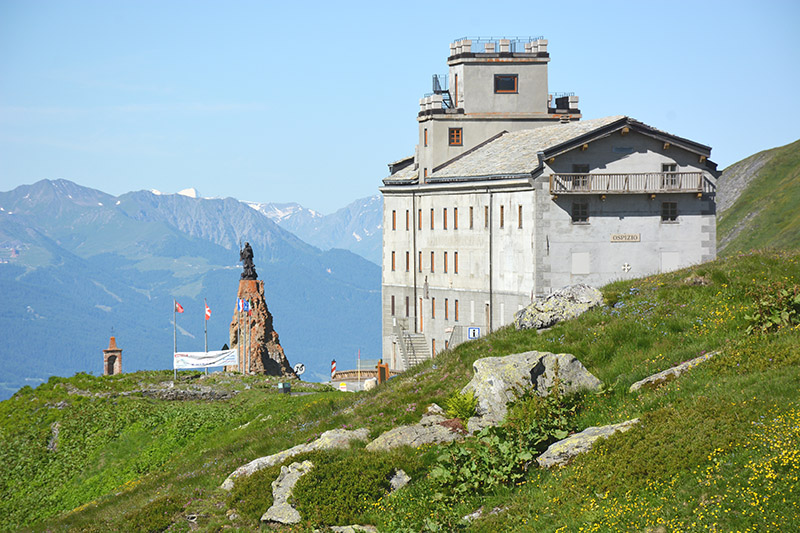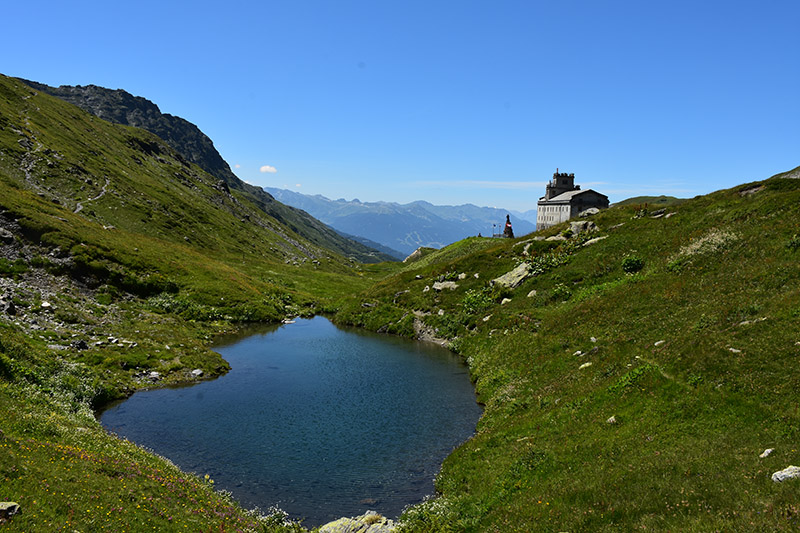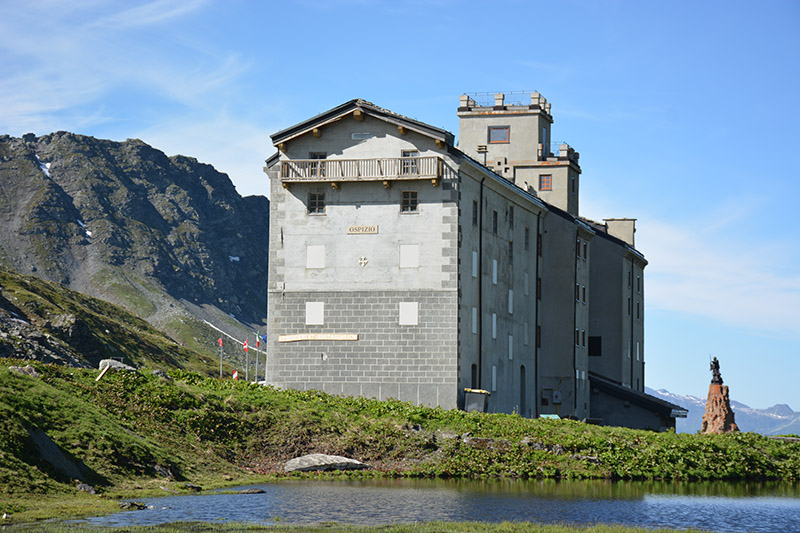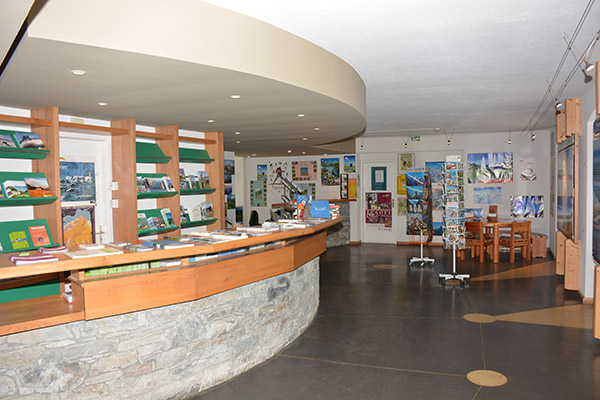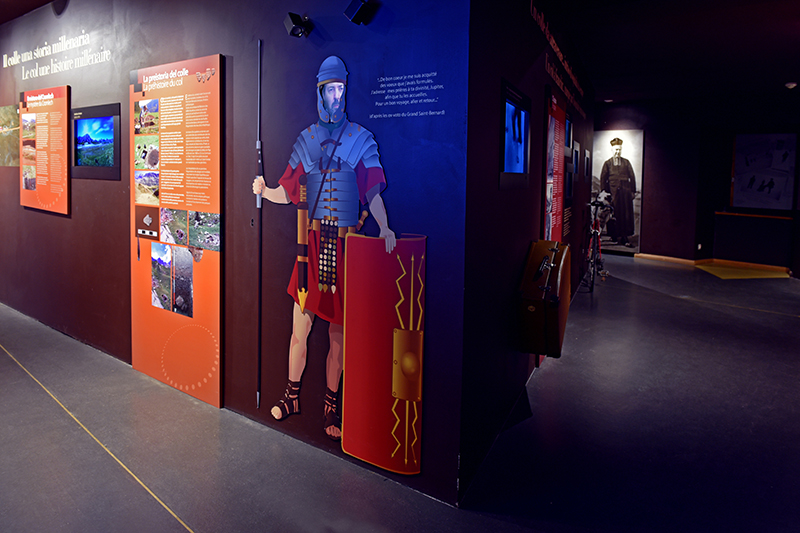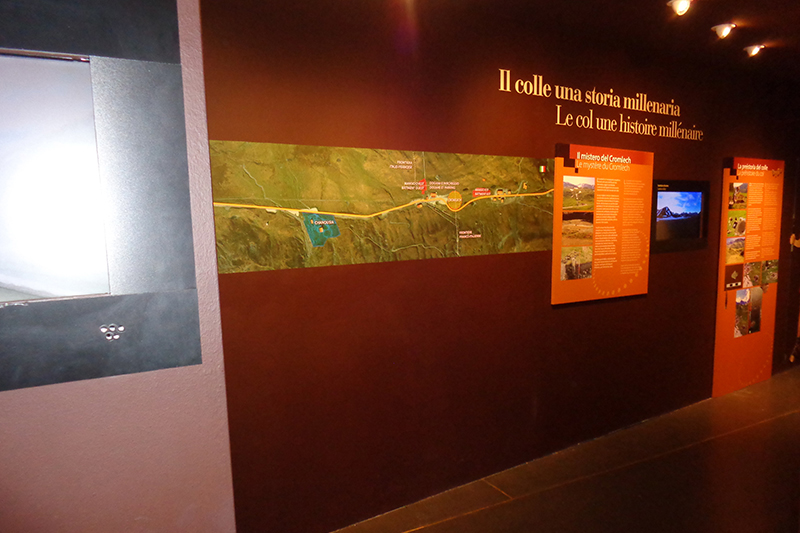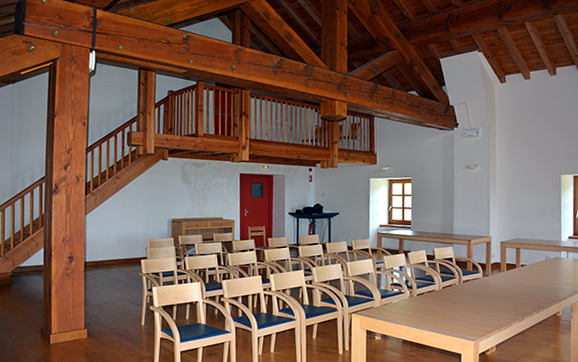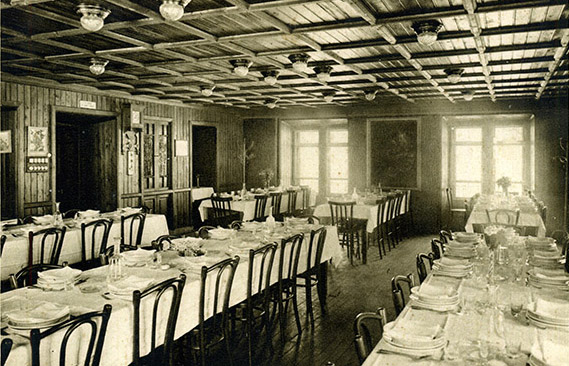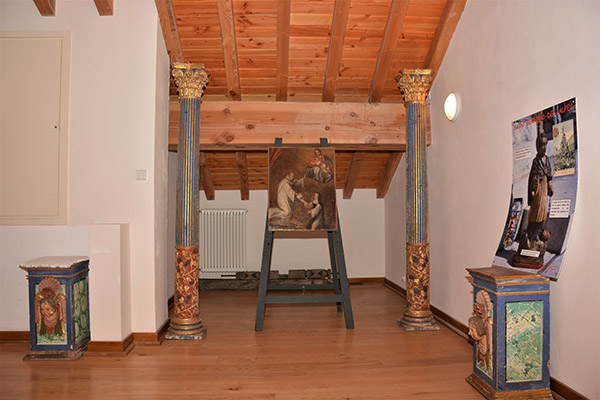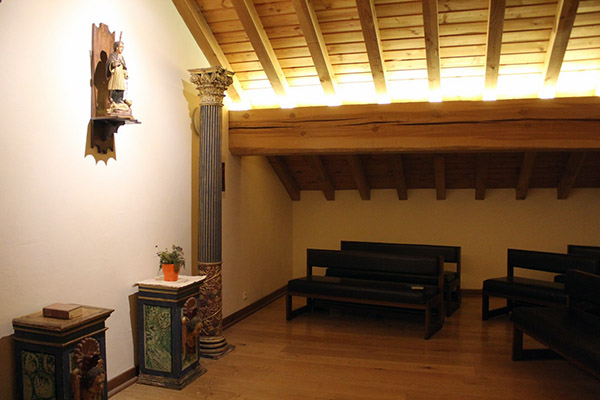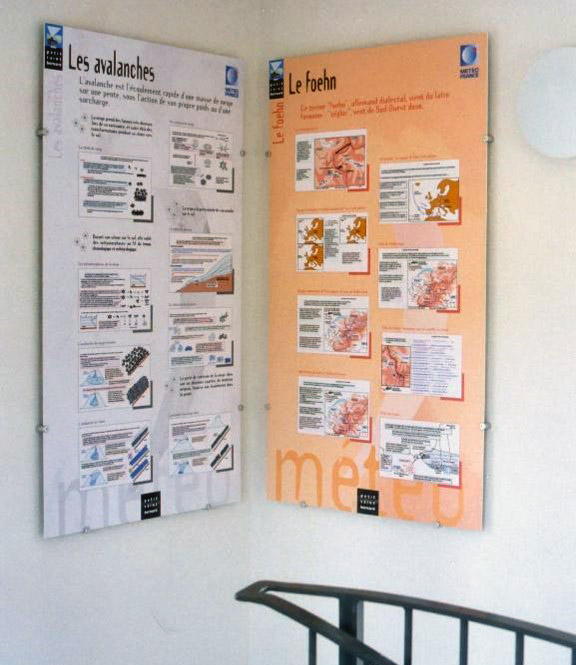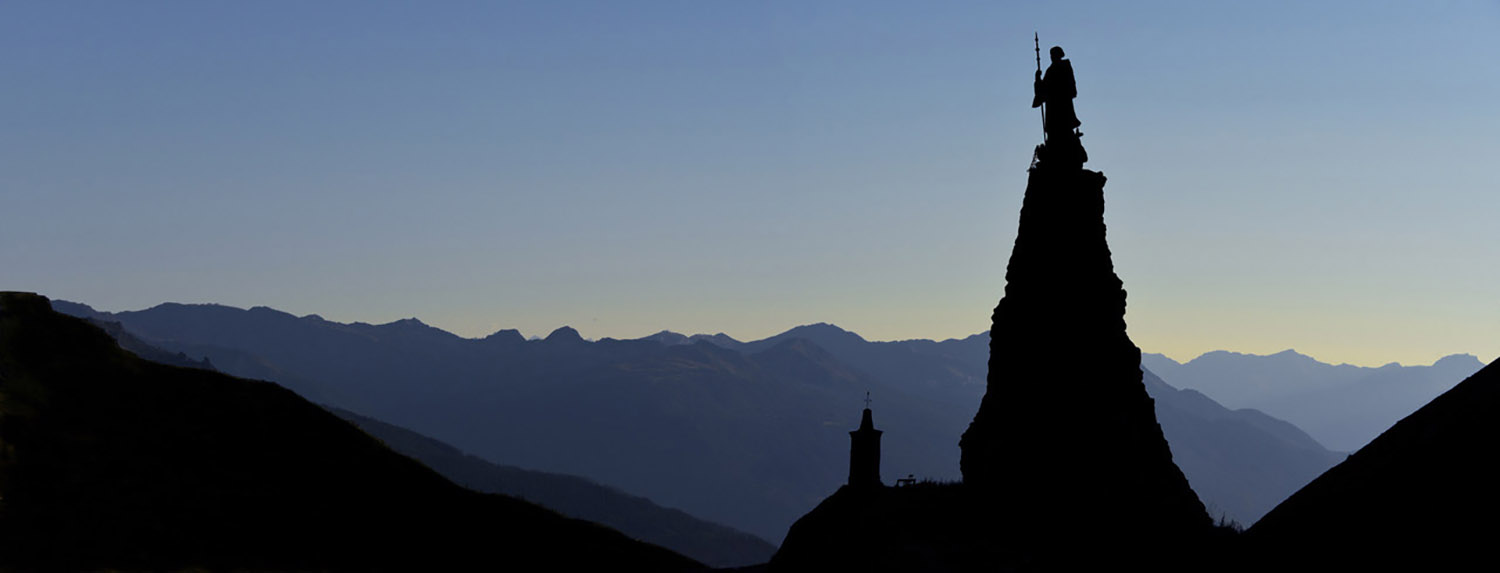
The hospice today
A real snow liner, the building imposes itself by its vast dimensions and its massiveness. Stretched over about fifty meters along the axis of the pass, it gives less grip to the winds despite its 5 floors.
The different floors of the hospice
Road level
The hospice has an entrance on the ground floor on the south side, accessible to the disabled, which allows access from the entrance hall to the room temporary exhibition where each year a new exhibition is presented.
On this same level you will find : toilets, elevator access and access to the back of the building and the large car park.
First floor
On the upper floor we can enter directly to tourist reception set up by the community of communes of Haute Tarentaise.( HVDC).
It can also be accessed by an exterior staircase on the east facade, overlooking departmental road 90.
It is in this place that 3 hostesses welcome pilgrims, hikers, walkers, cyclists and motorcyclists, all people happy to stop at the pass and at the hospice.
There is a real reception and information service for the pass and its surroundings, as well as all of the upper Tarentaise and the Aosta Valley. You can find various books, maps,topo, all information to enjoy the visit.
Adjoining this reception area, an interactive museum area gives a retrospective of the history of the place and its environment from antiquity to the present day; not to miss…. !!!
Tourist reception and info point
The Info Point and the permanent exhibition are open every day.
Open from June 15 to September 20.
Bilingual French and Italian welcome.
Horaires
June and september
10h30 - 16h30
July and August
10h - 18h
Second floor
Climbing one more floor, we find the accommodation level of the hospice which looks like this: Bedroom 1 (2 people with reduced mobility), bedroom 2 (4 people), bedroom 3 (5 people ), bedroom 5 (sleeps 8), bedroom 6 (sleeps 5), bedroom 7 (sleeps 6). In total, the hostel has thirty beds.
Third floor
On the upper floor is the restaurant: a dining room with 30 seats adjoins the kitchen with a small bar.
On the same landing, a large room named “European Space” serves as a meeting room, banquet, exhibition, cultural activities. It offers a beautiful view of the Séez valley; With the renovation of its “cathedral framework” it presents a beautiful volume and a beautiful acoustics. Contact us if you wish to rent it.
Fourth floor
The next floor leads to an open platform where several paintings of the hospice explain the work undertaken on this building ravaged by the 2nd war.
On the left at this same level isthe place of contemplation arranged by the association of the little St Bernard.
The statue of St Bernard in polychrome wood is exhibited there. This statue, found by a French soldier in the rubble of the hospice after the war, was given to the parish priest of Séez with the wish to replace it in this high place of Christianity, where everyone can gather, meditate and pray.
Fifth floor and terrace
On the top floor we reach the famous weather tower, 8m high; in 1922 it was added to the hospice but it was in 1869 that the first meteorological observatory was built.
A very interestingmuseum space onthe weather, winds, snow, glaciers, allows you to understand the functioning of all these elements that can be unleashed on the hospice, especially in winter.
At the top of this tower, a small terrace offers a magnificent view over the entire Tarine valley and the horizon of the Val d’ Aosta.


